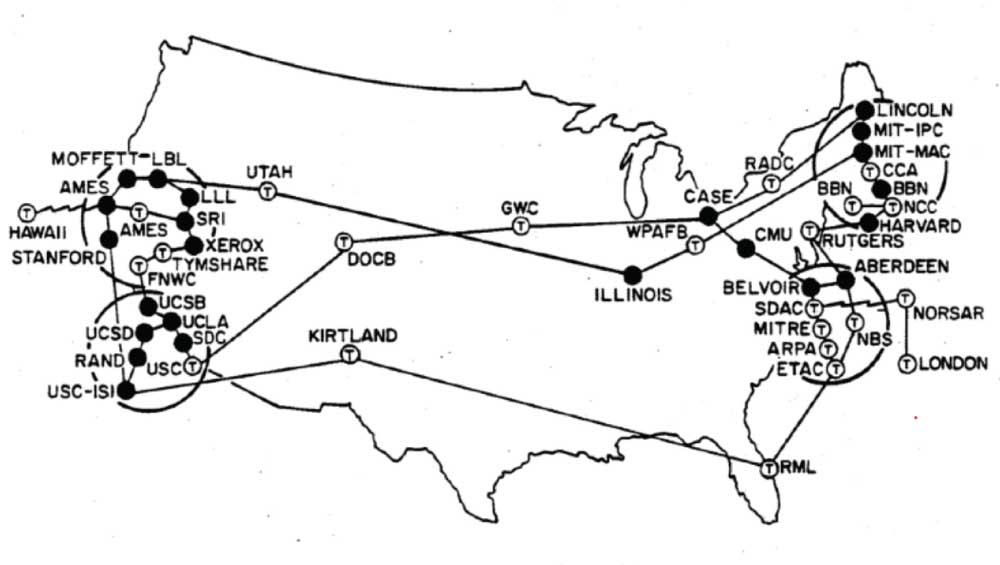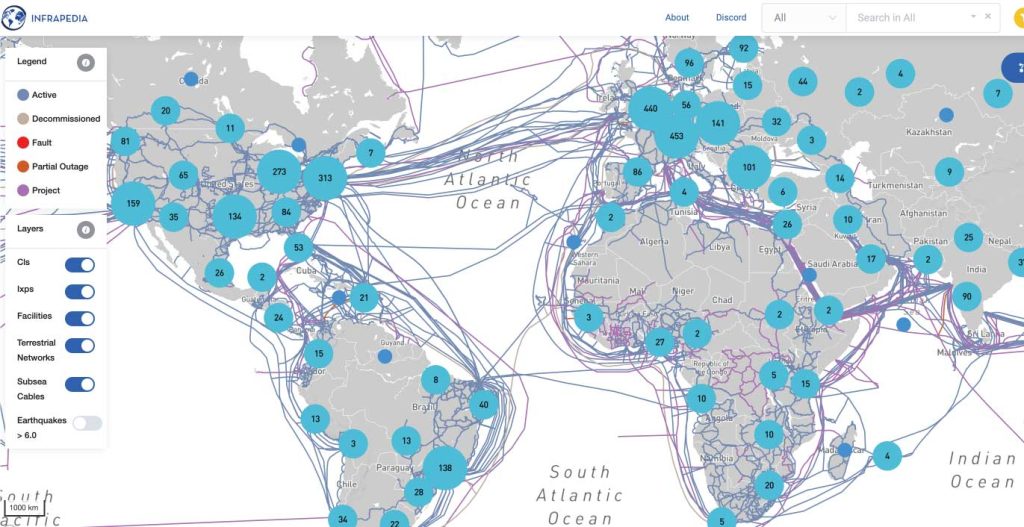The internet is a global network of computers that use standardized communication protocols to exchange data and share resources. When you access the internet, your device (such as a computer, smartphone, or tablet) sends a request to a server, which then returns the requested information (such as a webpage or video) to your device. This exchange of data happens via the Internet Protocol (IP), which routes the data packets between different devices over the network. The network infrastructure is made up of physical connections (such as fiber optic cables and satellite links) and virtual connections (such as wireless networks) that interconnect millions of smaller networks worldwide. The backbone of the internet is provided by internet service providers (ISPs), who provide access to the internet for individual and business users.
The concept of the internet dates back to the 1960s, when the US Department of Defense introduced a research project aimed at developing a way for researchers to share information and communicate with each other, even in the event of a nuclear attack. This project, known as the ARPANET, was the first operational packet switching network and is considered the precursor to the modern internet.
Over the next few decades, ARPANET evolved and other similar networks emerged, leading to the development of the Internet Protocol (IP) and the Transmission Control Protocol (TCP), which defined the standard way of transmitting data over the network. In the late 1980s, the Internet protocol suite (TCP/IP) became the standard for all internet communications, allowing different networks to interoperate and connect to form a global network.
In the 1990s, the commercialization of the internet began, leading to the rapid growth of the World Wide Web (WWW), which is a system of interlinked hypertext documents accessed via the internet. The widespread adoption of the web and the rise of e-commerce, online communication, and digital media transformed the internet into the essential tool it is today, connecting billions of people and devices worldwide.

The earliest technologies used to create the internet were primarily focused on enabling communication between research institutions and government agencies. The first operational packet switching network, the ARPANET, used a technology called NCP (Network Control Protocol) to transmit data between computers. NCP was later replaced by the Internet Protocol (IP), which has become the backbone of internet communication to this day.
In addition to IP, the Transmission Control Protocol (TCP) was developed to ensure reliable delivery of data packets over the network. Together, TCP and IP make up the Internet Protocol Suite (TCP/IP), which defines the standard way of transmitting data over the internet.
As the internet grew and evolved, new technologies were developed to improve its speed, reliability, and security. For example:
These and other technological advancements have helped to create the fast, reliable, and secure internet infrastructure that we have today.
The internet as we know it today is the result of the collaborative efforts of many individuals and organizations over several decades. It is not possible to credit the invention of the internet to a single person or group.
However, some key individuals and organizations that played important roles in the development and evolution of the internet include:
These individuals, along with many others, helped to lay the foundation for the internet as we know it today. Their work and contributions have had a profound impact on the world, transforming the way we communicate, access information, and do business.
The backbone of the internet refers to the high-speed network infrastructure that provides the underlying connectivity for the internet. The backbone is made up of a series of interconnected networks that span the globe, connected by high-capacity fiber optic cables, satellite links, and other forms of physical infrastructure.
These networks are owned and operated by Internet Service Providers (ISPs), large telecommunications companies, and government organizations. The backbone networks interconnect at various points of presence (PoPs), which are data centers that house routers and other network equipment used to exchange data between different networks.
Individual countries connect to the internet backbone through international and regional telecommunications networks. For example, an internet service provider in a particular country may have a direct connection to the internet backbone through a fiber optic cable that runs from the provider’s data center to a PoP in another country. The provider can then connect to other networks and the rest of the internet through this direct connection.
In some cases, a country may have multiple connections to the internet backbone through different providers, which can help to improve the reliability and redundancy of internet connectivity within the country.
It’s worth noting that the internet is a decentralized network, meaning there is no single “center” of the internet. Data can be transmitted between any two points on the internet through a series of interconnected networks and data centers, allowing for global access to information and resources.

ISPs are connected to the internet backbone through a process called peering. Peering is the interconnection of networks to exchange internet traffic between them. By peering with other networks, ISPs can exchange data with each other and provide access to the internet for their customers.
To establish a peering relationship, an ISP must first negotiate a peering agreement with another network. This agreement typically outlines the terms and conditions under which the two networks will exchange traffic, including the types of traffic that will be exchanged and the amount of bandwidth that will be allocated to each network.
Once the peering agreement has been established, the two networks will connect their routers and switches to a common point, such as an internet exchange point (IXP), to exchange traffic. IXPs are physical locations where ISPs can interconnect their networks and exchange internet traffic with each other.
The internet backbone is made up of the networks of multiple ISPs that have established peering relationships with each other. These networks exchange traffic to allow data to flow between different parts of the internet, allowing users to access websites, send emails, and perform other online activities.
In summary, ISPs are connected to the internet backbone through peering relationships with other networks, which allow them to exchange traffic and provide access to the internet for their customers.
Here is a list of the major ISPs that comprise a significant portion of the internet backbone throughout the world.
| ISP / Telecommunication Company | Location |
| AT&T | United States |
| Verizon Communications | United States |
| Comcast | United States |
| Deutsche Telekom | Europe (primarily Germany) |
| Orange S.A | Europe (primarily France) and Africa |
| China Telecom | China |
| China Unicom | China |
| British Telecommunications (BT) | United Kingdom |
| Nippon Telegraph and Telephone Corporation (NTT) | Japan |
| Reliance Jio | India |
| Singtel | Southeast Asia and Australia |
It’s worth noting that many of these companies also offer telecommunications and other services beyond just internet access, and they may have operations in other countries beyond the ones listed here. Additionally, the internet is a global network, and these companies are interconnected through their respective networks to provide internet access and other services to customers around the world.
ISPs, or Internet Service Providers, play a critical role in the operation of the internet. Specifically, ISPs are responsible for providing individuals and organizations with access to the internet by connecting their devices to the global network of networks. To do this, ISPs maintain their own networks and infrastructure, which includes the following components:
In addition to providing internet access, ISPs often offer other services such as email, web hosting, and security solutions to help customers get the most out of their online experience. ISPs also play an important role in maintaining the security and stability of the internet, as well as in developing new technologies and services to meet the changing needs of customers.
ISPs are connected to the internet backbone through a process called peering. Peering is the interconnection of networks to exchange internet traffic between them. By peering with other networks, ISPs can exchange data with each other and provide access to the internet for their customers.
To establish a peering relationship, an ISP must first negotiate a peering agreement with another network. This agreement typically outlines the terms and conditions under which the two networks will exchange traffic, including the types of traffic that will be exchanged and the amount of bandwidth that will be allocated to each network.
Once the peering agreement has been established, the two networks will connect their routers and switches to a common point, such as an internet exchange point (IXP), to exchange traffic. IXPs are physical locations where ISPs can interconnect their networks and exchange internet traffic with each other.
The internet backbone is made up of the networks of multiple ISPs that have established peering relationships with each other. These networks exchange traffic to allow data to flow between different parts of the internet, allowing users to access websites, send emails, and perform other online activities.
In summary, ISPs are connected to the internet backbone through peering relationships with other networks, which allow them to exchange traffic and provide access to the internet for their customers.
There are several common ways people (including businesses and individuals) connect to the internet, including:
In summary, the most common ways to connect to the internet include broadband internet, Wi-Fi, cellular data, and satellite internet. The hardware used to connect to the internet includes modems, routers, satellite dishes, and cellular devices.